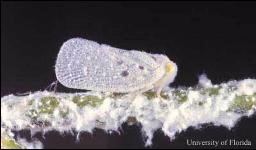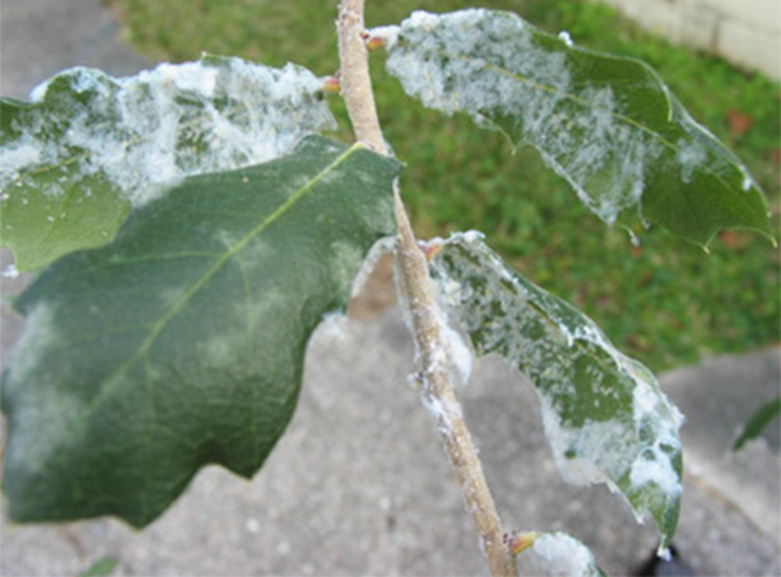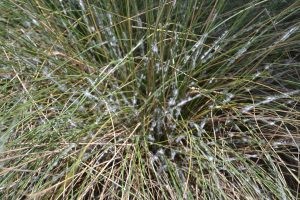Homeowner accounts of white fluffy woolly masses on woody ornamentals, oak trees and Muhly grass have been on the rise. The good news is they are native insects that need a nursery for their young and will cause little harm to the host plant. The bad news is scientists know very little about the complete live cycle and role in the environment of these insects.
Within the cottony mass there are citrus flatid planthoppers, woolly oak aphids, or Muhly mealybugs. The adults have laid eggs or birthed their young on the leaves. The young nymphs have excreted large amounts of the woolly wax to protect them from predators and weather while they grow larger. Food from the plants is needed to grow, so these piercing-sucking insects are removing sugars from the host plant. But, typically it is not enough to significantly change the plant’s appearance, so most people are not alarmed until they notice “all the white stuff”.

The only one that moves quickly are the citrus flatid planthoppers. When a person reaches for the flocked branch, something small moves and seems to jump at you. Most likely the jumping direction is away from you, but it still may be startling. They are planthoppers (Metcalfa pruinosa), an insect in the order Hemiptera. As the name implies, they occur on citrus but can also be found on many woody ornamentals and other fruit trees. The adult planthopper wing arrangement is tent-like, meaning that the forewings are held over the insect abdomen in a tent configuration.
Woolly oak aphids are conspicuous pests on oak (Quercus spp.), because they are covered with large amounts of flocculent wax. Two genera of woolly oak aphids occur in Florida. One species, Stegophylla brevirostris Quednau, is common, and the other, Diphyllaphis microtrema Quednau, is rare. Florida woolly oak aphids are recognized easily by the large quantities of woolly wax that they secrete. Beneath the wax, aphid bodies are pale. Young nymphs are typically pale green, and they tend to be more mobile than adults. The majority of reports of woolly oak aphids indicate a preference for live oak (Quercus virginiana Mill.) as the host. These aphids are live-bearing females. It is not known how these aphids disperse, but possibly they are picked up and carried by birds and larger flying insects because of the sticky wax that surrounds the bodies of the aphids.
Muhly grass (Muhlenbergia capillaris) is a generally pest free plant in its native habitat, however, the native mealybug, Stemmatomerinx acircula, has made an appearance on plants in various landscapes. Insects feed on the leaves and are grey with white wax that may have some filaments. You may also see long ovisacs on the leaves which contain eggs and crawlers. With close inspection, you will notice they have legs and can move about.
So “what do you do?’ If the plant doesn’t appear to be suffering, let nature take its course. “This to will pass.” If someone demands perfection, use insecticidal soap to reduce the population. The soft-bodied creatures will dry up before they can become adults. To read more about these odd creatures of nature go to: https://entnemdept.ufl.edu/creatures/
- Watch for “Melting Grass” - February 19, 2025
- Palms Can Suffer in the Cold - January 30, 2025
- Camellia Care - January 9, 2025


